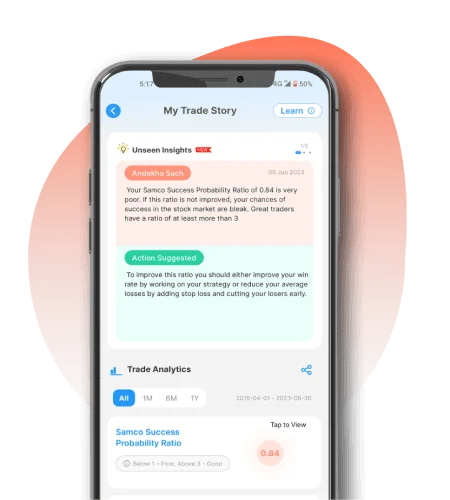Introduction
Futures & Options, collectively known as F&O, are among the most exciting yet complex financial instruments in the Indian stock market. These derivative contracts derive their value from an underlying asset like stocks, indices, or commodities and are primarily used for hedging, speculation, or arbitrage.
With the rising participation of retail traders and the introduction of online platforms like Samco, F&O trading is more accessible than ever. However, it’s essential to understand that F&O trading is not a shortcut to quick profits. It demands discipline, strategy, and a thorough understanding of risk.
While F&O trading can enhance returns and offer flexibility in volatile markets, it also carries a significant degree of leverage and complexity. Therefore, this guide aims to equip you with the knowledge to trade responsibly and strategically within the Indian regulatory framework and market environment.
What Are Futures and Options?
Futures and Options are both derivative contracts, but differ in structure and usage.
Futures:
A futures contract is an agreement to buy or sell an underlying asset at a predetermined price on a specified future date. Futures are obligatory contracts, meaning both buyer and seller must fulfill the agreement at expiry.
Example: If you buy a Nifty 50 Futures contract at ₹24,700, you are obligated to buy the index (cash-settled) at expiry, regardless of market price.
Options:
An options contract gives the buyer the right, but not the obligation to buy (Call Option) or sell (Put Option) an asset at a specific price (strike price) on or before expiry. Option sellers (writers), however, have an obligation to fulfill the contract.
Key Terms:
- Underlying Asset: Stocks, Indices (like Nifty or Bank Nifty)
- Contract Size: Fixed by the exchange (e.g., 50 units for Nifty)
- Expiry: Usually last Thursday of the month (weekly and monthly contracts)
- Premium: Price paid for buying an option
- Strike Price: Price at which the contract can be exercised
Analogy:
Think of the future as booking a hotel room in advance for ₹5,000 per night regardless of the seasonal hike. An option is like paying ₹500 to keep a booking (right), and if prices go above ₹6,000, you exercise it; else, you lose only ₹500.
Who Should Trade in F&O?
F&O trading is not for everyone. It suits traders who are:
- Comfortable with risk: F&O involves leverage, meaning small price moves can cause large profit or loss.
- Financially prepared: SEBI's margin requirements mean you should have sufficient funds, often ₹1.5 lakh or more, for safe trading.
- Technically aware: You need to read charts, understand trends, and monitor indicators.
- Disciplined: Overtrading or emotional decisions can lead to significant losses.
- Not looking for quick riches: A big myth is that F&O is a “get rich quick” scheme. In reality, it's a tool for professionals and serious traders.
It is ideal for traders who:
- Want to hedge their portfolio
- Aim to speculate short-term moves
- Are exploring income-generating strategies like writing covered calls
Step 1: Open a Trading & Demat Account with F&O Activation
Choose a SEBI-registered broker like Samco. Ensure F&O segment is activated. Submit income proof (ITR, bank statement) as required by SEBI guidelines.
Step 2: Understand Margin Requirements
F&O trading requires margin money. For example, to trade 1 lot of Nifty Futures, you may need ₹1–1.5 lakhs as per current volatility and margin requirements. Use a margin calculator to assess exposure.
Step 3: Access Option Chain and Futures Data
- Use NSE’s website or broker platforms (like Samco) to analyze option chains, where you can view premiums, open interest, and implied volatility.
- Use live data to monitor price movements and contract details.
Step 4: Place Buy/Sell Orders
- Limit Order: Set your price and wait for execution.
- Market Order: Immediate execution at current price.
- Stop Loss Order: Triggers only after reaching a defined level to limit losses.
Step 5: Monitor and Exit the Trade
Keep an eye on:
- MTM (Mark-to-Market) profits/losses
- Changes in premium or futures price
- Technical indicators for exit cues
Use trailing stop-loss or book profits gradually. Close your position before expiry unless you intend to take delivery or settle in cash (as per the contract).
Basic F&O Trading Strategies
1. Buying Call and Put Options
- Call: Buy if you expect the price to rise.
- Put: Buy if you expect the price to fall.
Example: Buy Reliance 2500 Call Option at ₹20 premium. If stock rises to ₹2,600, your premium may jump to ₹100, giving profit of ₹4,000 per lot (₹100 - ₹20 × lot size).
2. Covered Call
Buy a stock and sell a call option at a higher strike. This generates income from premium.
Example: Buy Infosys at ₹1,400 and sell 1,450 Call Option for ₹25 premium. You keep the premium even if the stock remains flat.
3. Hedging with Futures
If you hold a stock and fear downside, short futures to protect from price fall.
4. Long Straddle/Strangle
Expecting big move, but unsure of direction? Buy both Call and Put of same expiry.
Example: Nifty at ₹24,800 Buy 24,800 Call & Put. If market moves sharply, one side gains more than the premium loss on the other.
These are just starters more advanced strategies (iron condors, spreads) can be explored with experience.
Risk Management in F&O
1. Stop Loss is Mandatory
Set predefined stop loss for every trade. For example, if you buy a Nifty Future at ₹24,800, you might place a SL at ₹24,600.
2. Understand Leverage
While margin trading allows large positions with limited capital, it magnifies both profits and losses.
3. Mark-to-Market (MTM) Losses
MTM reflects daily profit/loss. If your margin falls below the required level due to MTM loss, your broker may square off the position.
4. SEBI Peak Margin Rules
SEBI mandates upfront collection of full margin before order execution, reducing excessive leverage.
5. Avoid Overtrading
Stick to 1–2 trades based on strong setups. Don’t chase losses.
Example:
Trader A uses ₹1 lakh and risks ₹5,000 per trade. Trader B uses same capital but takes positions worth ₹10 lakhs. A small 2% move could wipe out B’s capital.
Disciplined traders survive; impulsive ones don’t.
Taxation and Compliance in F&O
- Business Income
F&O profits or losses are treated as non-speculative business income under Indian tax law. - ITR Form
Use ITR-3 if you're filing as an individual. You’ll need to report income, expenses, and balance sheet details. - Tax Audit
If turnover exceeds ₹1 crore (or ₹10 crore under presumptive scheme), and profits are below threshold, audit is compulsory. - Books of Accounts
Maintain proper records of trades, expenses, and margin statements. Platforms like Samco offer downloadable P&L reports. - Advance Tax
If tax liability exceeds ₹10,000/year, you’re required to pay advance tax every quarter.
Tax planning is key. Consult a tax advisor to stay compliant and avoid notices.
Analyzing the Market for F&O Trades
1. Technical Indicators
- Moving Averages: 20 & 50-day MA to spot trends.
- RSI (Relative Strength Index): Signals overbought (>70) or oversold (<30) levels.
- Support/Resistance Zones: Use price history to locate key levels.
2. Option Chain Analysis
Use open interest (OI) to find strong support/resistance.
Example: Heavy Call OI at 25,000 suggests resistance. High Put OI at 24,700 signals support.
3. Option Greeks (Basic)
- Delta: Sensitivity of premium to underlying price.
- Theta: Time decay hurts buyers, benefits sellers.
4. Volume & Open Interest
A breakout with volume + rising OI = strong trend confirmation.
These tools help filter high-quality setups and reduce gambling trades.
Using the Right Trading Platform
Choosing a smart and reliable platform is vital.
What to Look For:
- Live F&O margin calculator
- Access to option chain
- Built-in strategy tools
- Charting with indicators
- Low latency execution
Why Samco?
Samco’s platform offers:
- Samco app with real-time insights
- Option chain utility with strategy suggestions
- Bracket and cover orders to automate risk
Whether desktop or mobile, a seamless trading experience with analytics, alerts, and P&L visibility makes all the difference.
Conclusion
Trading in Futures and Options can be a game-changer when used wisely. It offers unmatched flexibility, hedging capabilities, and the potential for substantial gains. But with great power comes great risk.
This guide aimed to clarify the workings of F&O trading, demystify strategies, and stress the importance of risk control. As with any financial instrument, knowledge and discipline are your biggest allies.
Use reliable platforms like Samco, educate yourself continuously, and remember successful trading is not about being right all the time, but about managing risk when you’re wrong.








 Easy & quick
Easy & quick